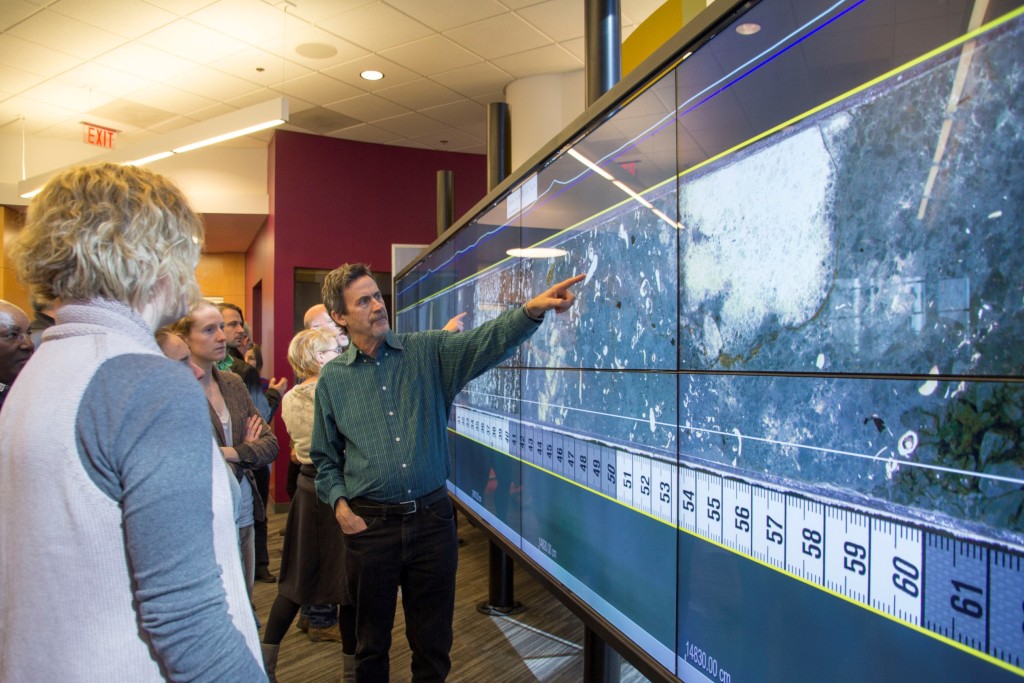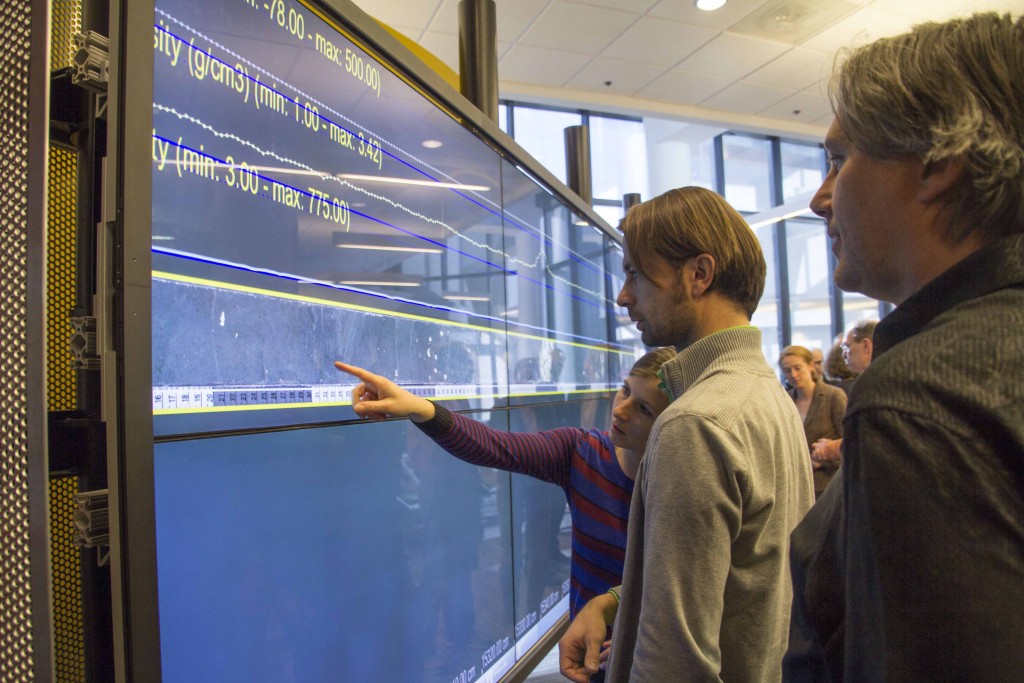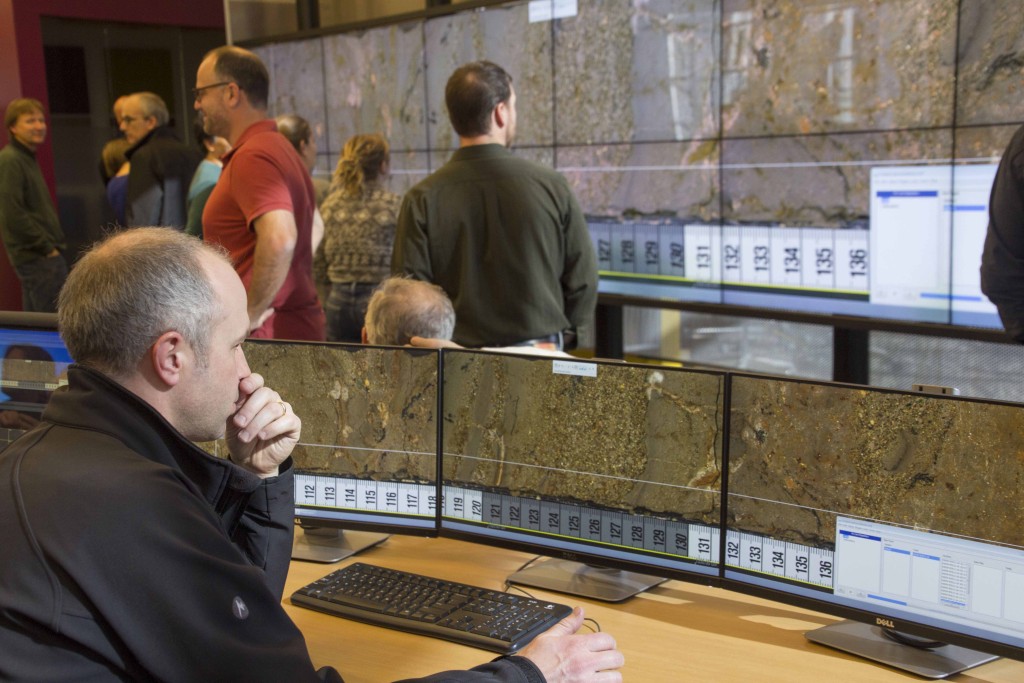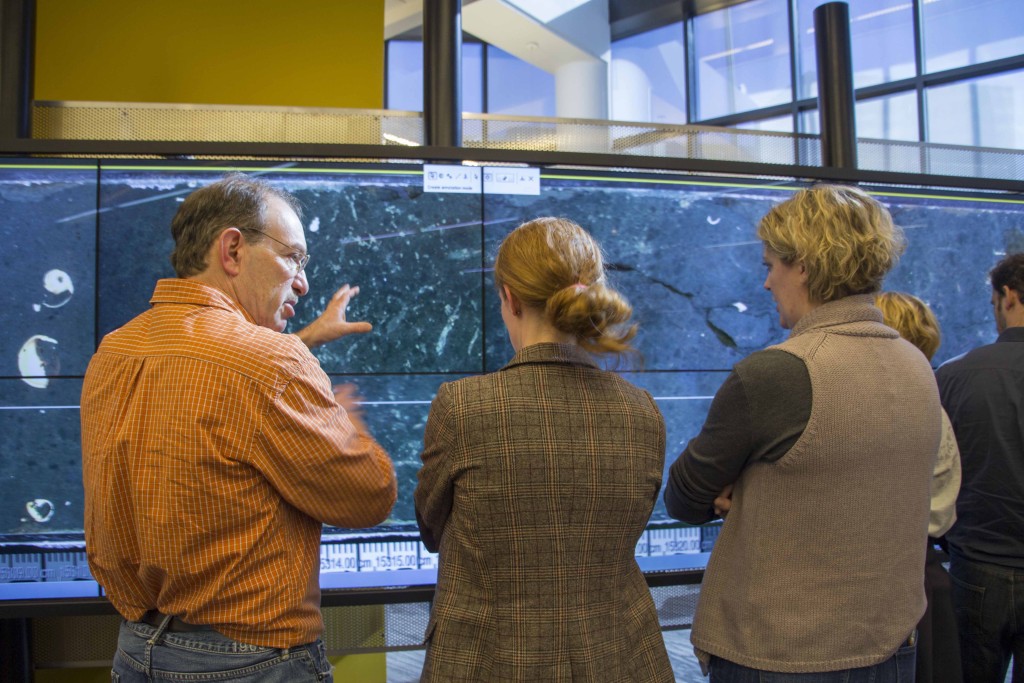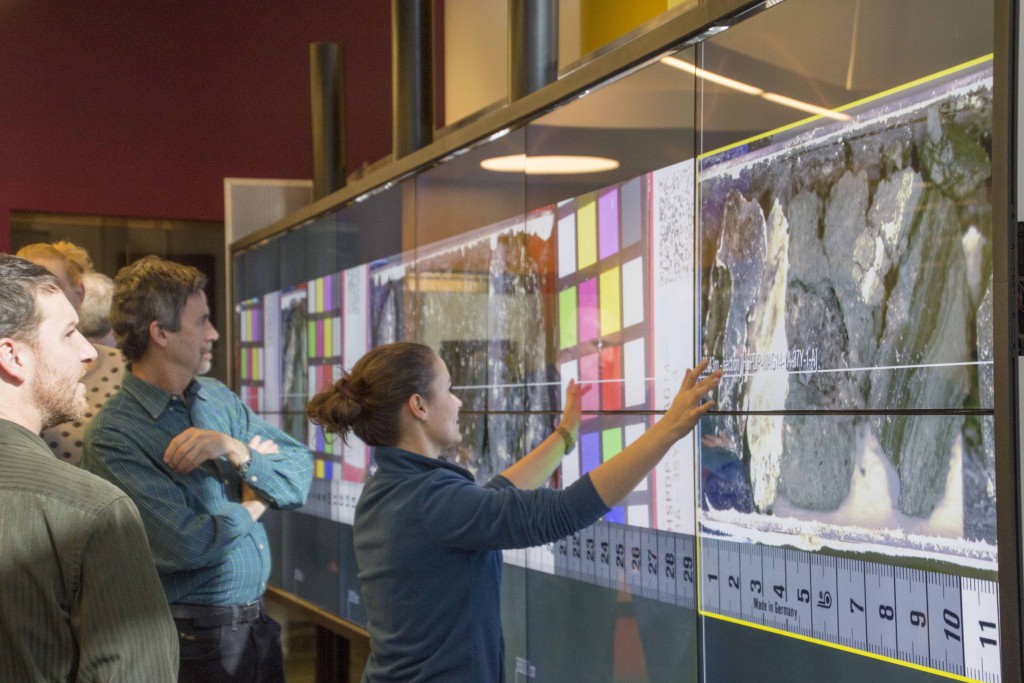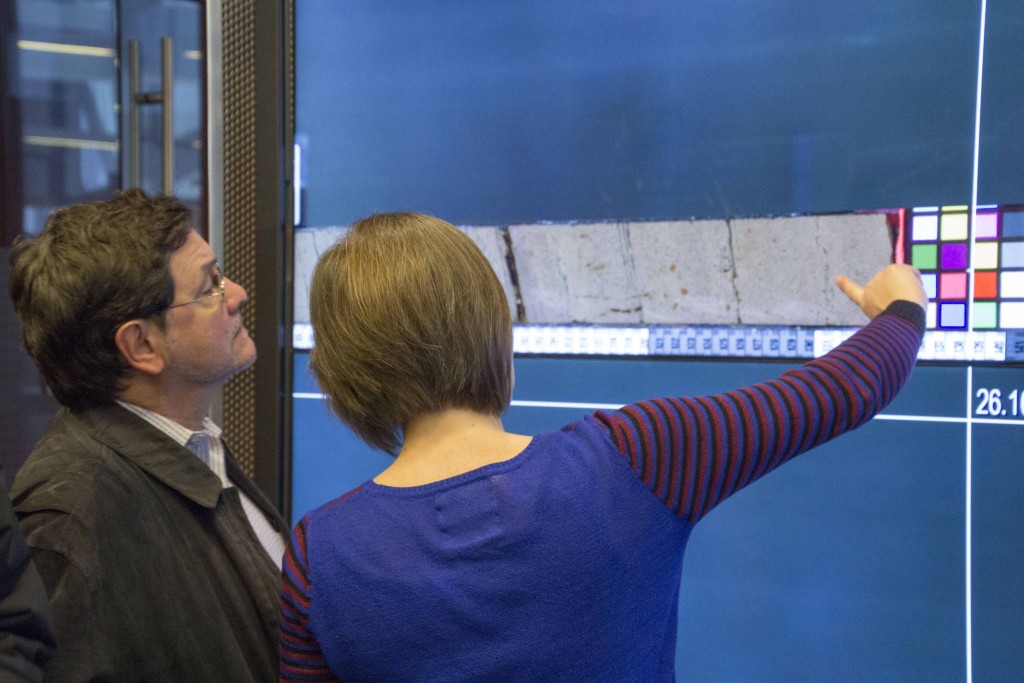Smithsonian, Human Origins Researchers Use CURVE’s Visualization Technology
Georgia State University recently hosted a conference for researchers from the Hominin Sites and Paleolakes Drilling Project (HSPDP), in collaboration with the Smithsonian Institution’s Human Origins Program. The HSPDP consists of five research teams from 12 countries, plus the Smithsonian Research team that is collaborating with HSPDP. GSU’s own Dr. Dan Deocampo directs the lab which analyzes the mineral samples from 5 of 6 core sites using X-ray diffraction techniques.
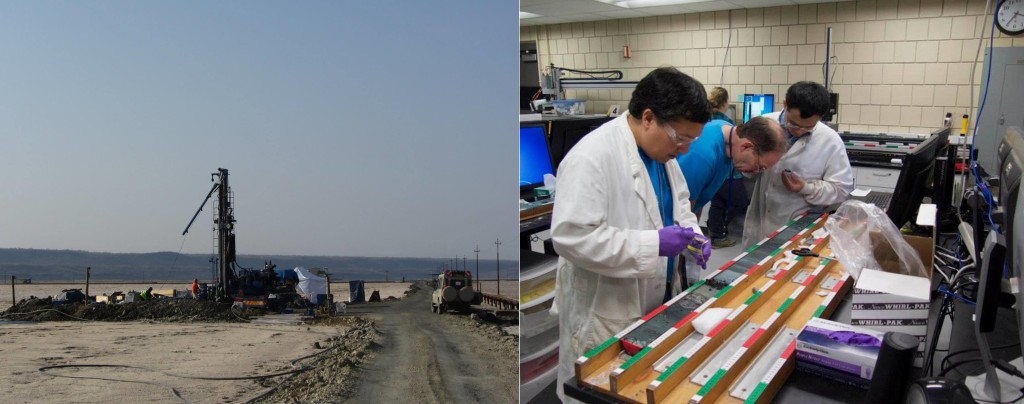
To help visualize scanned core images, project team members worked with the CoreWall team, a group of scientific software developers who support researchers viewing images stitched together as seamless image files. With the cores ranging from 300 to 600 meters in length, visualizing these core images on a large digital canvas enhances the teams’ analytical capabilities. The 24 foot (7.3 meters wide) interactWall at Georgia State University Library’s CURVE provided the perfect digital canvas for the six research teams. Deocampo noted of the interactWall, “This technology allows us to closely examine the sediment in detail while keeping the larger context – we’re literally looking through a window at the earth’s history millions of years ago. This is helping us understand how changing climate affects the environment, ecosystems, and organisms in Africa and around the globe.”
The Hominin Sites and Paleolakes Drilling Project team took full advantage of the visualization capacities of the interactWall. Dr. Deocampo and Dr. Emily Beverly, a Post-Doctoral Research Scientist in the Department of Geosciences at Georgia State University, will continue their work by using the visualization technology in CURVE to get a closer look at the sediment details found in these cores.
